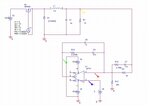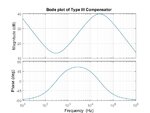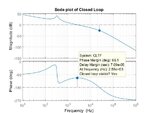shomikc
Member level 4

Hello all,
I am beginning to think that PID control or any feedback control of power electronics converters is just magic and can only be performed by magicians.
I have tried as a last attempt Type III compensation (PID) but the op-amp output is still saturated at Vcc.


I followed all the formulas given in https://www.intersil.com/content/dam/Intersil/documents/tb41/tb417.pdf
Please help.
Thank you.
Shomik
I am beginning to think that PID control or any feedback control of power electronics converters is just magic and can only be performed by magicians.
I have tried as a last attempt Type III compensation (PID) but the op-amp output is still saturated at Vcc.


I followed all the formulas given in https://www.intersil.com/content/dam/Intersil/documents/tb41/tb417.pdf
Please help.
Thank you.
Shomik









